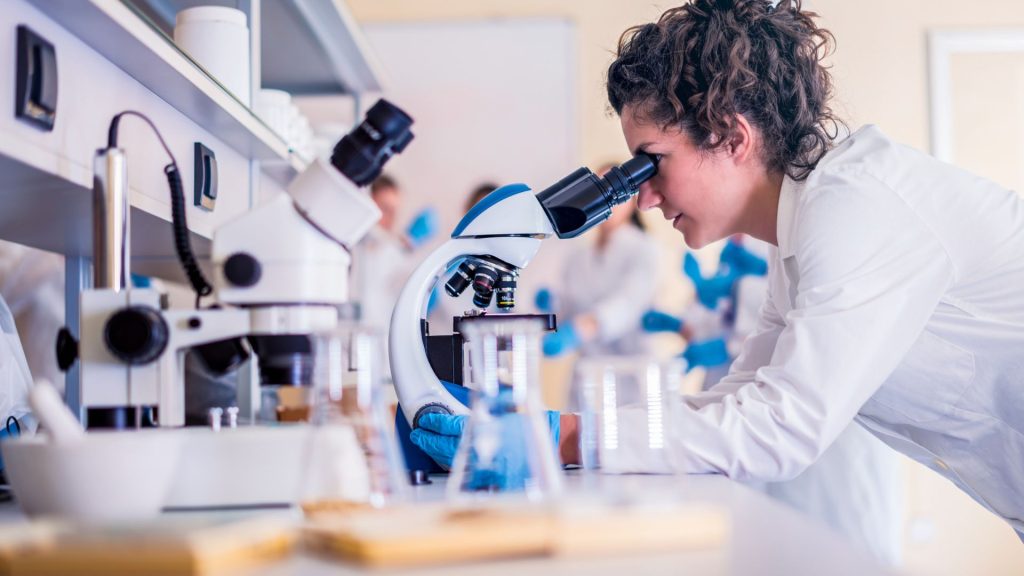
Bioengineering is no longer confined to research facilities and controlled experiments. Its impact has expanded into everyday life, reshaping how people live, work, and care for their health. From advanced medical treatments to sustainable materials, bioengineers are solving practical challenges that affect millions. Whether it’s improving food production or creating eco-friendly solutions, their work is making daily life more efficient, healthier, and sustainable.
The Foundation of Bioengineering
Bioengineering blends the disciplines of biology, engineering, and technology to solve real-world challenges. By combining scientific insight with practical application, it addresses issues across a range of fields, including healthcare, energy production, and materials development. This multidisciplinary approach enables bioengineers to create innovations that improve lives while contributing to sustainable progress.
At its core, bioengineering merges the principles of biology with the precision of engineering and the advancements of technology. It applies scientific methods to design and develop systems that mimic natural processes or enhance biological functions. By understanding how living systems operate, bioengineers create solutions that are both practical and efficient. The versatility of this field gives it wide-reaching applications.
“In healthcare, bioengineers have developed artificial organs, advanced prosthetics, and targeted drug delivery systems,” says Shawn Dahl, a Bioengineering graduate from UC Berkeley who has contributed over five years to the biotechnology sector. “In energy, they work on optimizing biofuels derived from crops and microorganisms as an alternative to fossil fuels. Meanwhile, in materials science, bioengineering has spurred the creation of biodegradable plastics and materials capable of self-repair. The field is defined by its ability to adapt to a diverse set of challenges while maintaining a focus on usability and sustainability.”
Research serves as the backbone of bioengineering, driving the progress necessary to convert theoretical ideas into practical applications. Without the ongoing exploration of biological systems and engineering techniques, the field would stagnate. Breakthrough discoveries have continued to expand its reach, transforming it from a purely academic discipline into one with direct impacts on society.
Gene editing technologies, such as CRISPR, have revolutionized the way scientists approach genetic disorders, offering precise interventions previously thought impossible. Innovations in tissue engineering have paved the path for lab-grown organs, reducing dependence on organ transplants. The use of bioinformatics has enabled researchers to analyze complex biological data more effectively, accelerating the development of personalized medicine. These examples reflect how research drives bioengineering forward, bridging the gap between experimental concepts and tangible solutions.
Each advancement builds upon previous successes, ensuring that bioengineering remains at the forefront of science and technology. By constantly rethinking traditional methods and testing the boundaries of what’s possible, bioengineers contribute to solutions that address current issues and anticipate future challenges.
Bioengineering in Healthcare
The influence of bioengineering in healthcare has grown exponentially, reshaping treatments, diagnostics, and patient outcomes. By merging biology and engineering principles, bioengineers are introducing innovative tools and methods that are improving lives in ways that were unimaginable decades ago. From life-saving devices to tailored therapies, their contributions are elevating the standard of care across the globe.
Advancements in medical devices are a cornerstone of healthcare innovation, and bioengineers have played an essential role in driving progress. Tools like prosthetics, pacemakers, and biosensors have benefited from groundbreaking designs and improved functionality, directly impacting patient care.
Modern prosthetics have evolved from basic mechanical replacements to sophisticated devices that mimic natural movement. Many include advanced materials and sensors, allowing wearers to experience increased mobility and comfort. Some prosthetics can even connect to the nervous system, enabling a level of control that mirrors the function of a biological limb.
Pacemakers have also been transformed, thanks to bioengineering. Today’s devices are smaller, more efficient, and even capable of wirelessly transmitting data to healthcare providers. These improvements reduce surgical risks and provide better monitoring of heart conditions, ensuring that patients receive timely interventions when needed.
Biosensors represent another leap forward. These small, wearable sensors measure various biological markers, such as glucose levels or blood oxygen saturation, in real time. They offer patients a convenient way to manage chronic conditions like diabetes or monitor overall health. With these innovations, care becomes more immediate, less invasive, and significantly more accessible.
Personalized medicine is redefining healthcare by tailoring treatments to individual patients, and bioengineers are at the heart of this transformation. Through the integration of genomics, diagnostic advances, and refined drug delivery systems, they are helping unlock the potential of custom-fit care.
Genomics, the study of an individual’s genetic makeup, has enabled healthcare providers to predict and prevent illnesses based on genetic predispositions. Bioengineers contribute to this field by designing tools to sequence and analyze DNA with greater speed and accuracy. Technologies like CRISPR have also opened doors for precise gene editing, offering solutions for genetic conditions that were once untreatable.
Beyond genomics, bioengineers have improved diagnostics by creating devices capable of detecting diseases at earlier stages. Liquid biopsies, for instance, are non-invasive tests that can identify cancer markers in a patient’s bloodstream. These innovations enable quicker diagnoses and better chances of successful treatment.
Drug delivery systems have also seen significant advancements. Traditional methods often disperse medication throughout the body, causing unintended side effects. Bioengineers have designed targeted delivery systems that guide medication directly to affected areas. Nanoparticles, for example, are used to transport therapeutic agents to cancer cells while sparing healthy tissue. This targeted approach boosts efficacy and reduces harm, providing patients with safer treatment options.
Bioengineering in Environmental and Consumer Applications
Bioengineering is reshaping consumer products and environmental solutions by introducing sustainable materials, bioengineered foods, and eco-friendly energy sources. The development of biodegradable plastics addresses the global plastic waste crisis by providing alternatives that break down quickly. Lab-grown materials like leather and silk reduce reliance on traditional production methods, minimizing environmental impact.
The food industry is also benefiting from bioengineering. Plant-based and lab-grown meat alternatives offer resource-efficient options that reduce the strain on land, water, and energy consumption. Crops enhanced with essential nutrients help combat malnutrition, while bioengineered plants designed for resilience ensure food security in challenging climates.
In the energy sector, biofuels derived from renewable biological sources provide a sustainable alternative to fossil fuels. Advances in algae-based biofuels and cellulosic ethanol are making clean energy production more viable. Bioengineers are also addressing pollution through microorganisms that break down oil spills and heavy metal contamination, mitigating environmental damage.
Ethical Considerations and Public Perception
As bioengineering continues to influence modern life, ethical considerations and public perception remain central to its advancement. Innovations in genetic modification and biotechnology raise questions about safety, societal impact, and moral responsibility. Establishing ethical guidelines ensures responsible innovation while fostering trust.
Public understanding plays a crucial role in the acceptance of bioengineered solutions. Transparent communication and education help address concerns, dispel misconceptions, and encourage informed discussions about the benefits and potential risks of bioengineering.
Bioengineering has pushed beyond the lab, transforming everyday life with practical innovations that improve health, sustainability, and the environment. Its fusion of biology and engineering has reimagined how society approaches challenges like medical care, food security, and renewable energy. As the field continues to evolve, it holds the potential to address emerging global challenges, driving progress toward a healthier, more sustainable world shaped by science and creative thinking.





